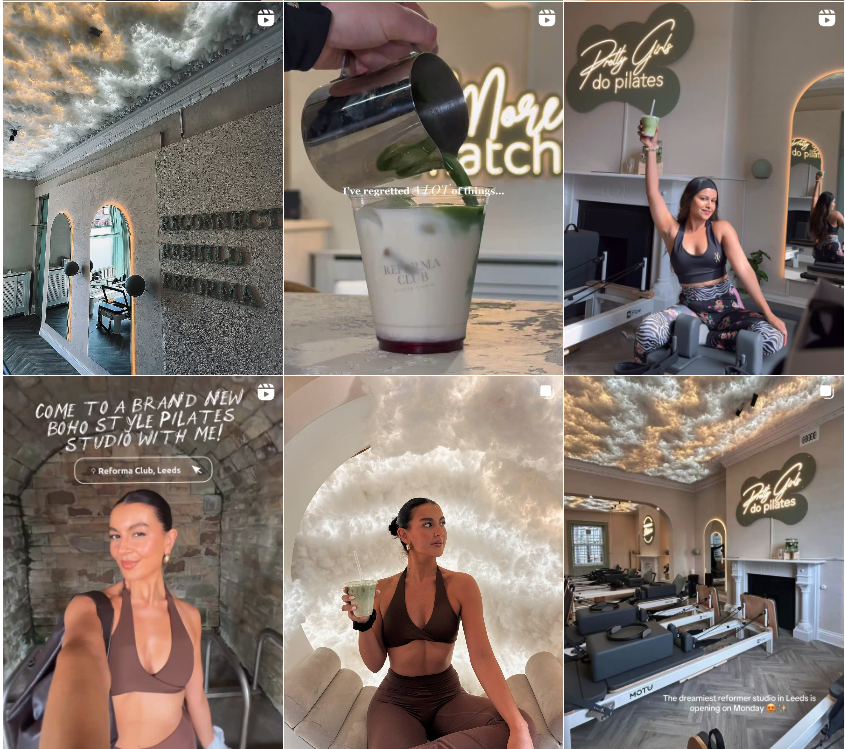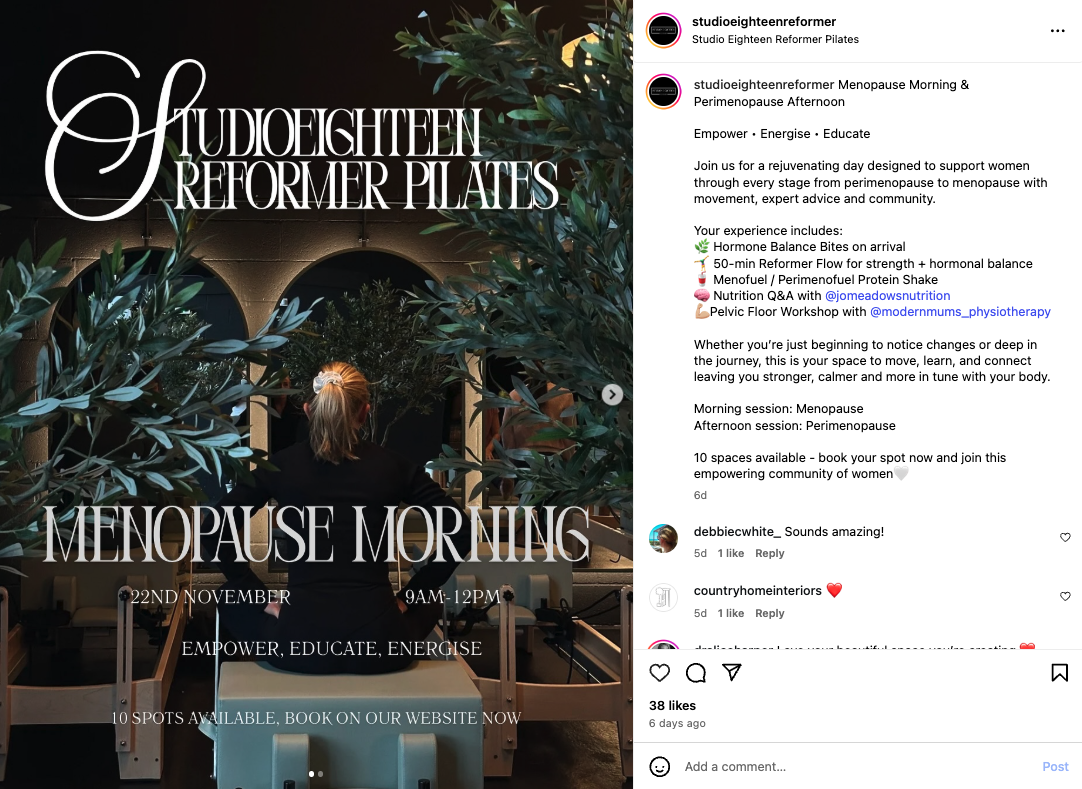In a booming yet saturated market — whether it’s yoga, Pilates, pole dance or fitness — competition is everywhere. Offering high-quality classes is no longer enough: clients are seeking a full experience, a strong identity, a reason to choose you — and to stay loyal.
If you're in the process of opening your studio, you’re probably feeling this pressure:
How can I get noticed? How can I stand out without overspending on marketing? And more importantly, how do I build a solid client base in the first few months?
These are legitimate — and crucial — questions.
In this article, we’ll share four actionable differentiation strategies, each illustrated with a real-world or field-inspired example. You’ll discover how recently launched studios have successfully captured attention, built loyalty, and developed a strong identity from day one. These insights will help you sharpen your own strategy — and lay the groundwork for sustainable growth.
Four Practical Strategies to Stand Out from the Start
In a competitive environment, offering “good classes” is no longer the key to success. What truly makes a difference today is your ability to create a strong identity, deliver a memorable experience, and establish a clear position in the customer’s mind.
To bring this to life, we’ve selected several recently launched studios that have managed to stand out with intelligence, creativity, or strategic precision. Each example presents a winning approach you can adapt to your own context.
1. Define a Clear and Unique Positioning
Positioning is the foundation of any differentiation strategy. It answers a simple but demanding question:
Who is your studio for, and how is it different from those that already exist?
This involves:
- A clearly defined target audience: young professionals in transition, pregnant women, casual athletes, active seniors, etc.
- A brand tone and identity aligned with that audience: warm, energetic, premium, accessible…
- A strong promise: what are you offering that your competitors aren’t — or not in the same way?
Case Study – The Mind Hack
The Mind Hack stands out in London’s wellness scene with a focus on mind–body optimisation and emotional wellbeing.
Combining neuroscience-informed coaching, functional movement, breathwork, and counselling services, the studio delivers on its mission of providing a complete toolbox for life — mind, body, and emotional wellbeing.
This holistic approach attracts a modern audience seeking both performance and presence, setting The Mind Hack apart from London’s more conventional training spaces.

2. Design a Differentiated Client Experience
In a saturated market, the experience your clients live becomes a more powerful lever for loyalty and word-of-mouth than pricing or even the offer itself.
This involves attention on several levels:
- The welcome experience: quality of first contact, ease of booking, team responsiveness.
- The physical environment: design, cleanliness, comfort, signage — all influence perceived value.
- The “little extras”: herbal tea on-site, curated playlists, lounge space, personalized follow-up...
Case Study – Hot Curl Pilates Studio
Hot Curl Pilates brings a fresh, playful energy to the Pilates scene with an experience that’s as colourful and uplifting as its studio design.
Stepping inside feels like entering a retro beach club with bright hues, bold patterns, and upbeat playlists create an atmosphere where movement feels joyful, not routine.
Every detail, from the friendly team to the fun, music-driven sessions, reflects the studio’s laid-back yet empowering spirit.
By turning each class into a vibrant, feel-good escape, Hot Curl Pilates builds loyalty through emotion and atmosphere, proving that fitness can be equal parts effective and fun.
.png)
3. Build a Coherent and Engaging Digital Presence
Digital is often the first point of contact between your studio and potential clients. It should reflect your positioning and support your acquisition and retention strategy.
Key elements include:
- A professional, mobile-friendly website with smooth booking and a clear presentation of your offers.
- An active social media presence highlighting life in the studio, client testimonials, and your brand values.
- High-value content: expert tips, instructional videos, instructor interviews, mini-challenges...
Case Study – Reforma Club
Reforma Club UK has built a digital identity that thrives on community, creativity, and collaboration.
Their social media isn’t just about class schedules. They regularly partner with influencers, share user-generated content, and host giveaway collaborations with complementary brands to expand reach and engagement.
This strategy keeps their online presence dynamic and authentic, while reinforcing their brand values through real voices and shared stories.
The result? A seamless bridge between online buzz and in-studio foot traffic — turning social engagement into new members and deeper loyalty.

4. Anchor Yourself Locally: The Power of Partnerships
Differentiation doesn’t stop at what happens inside the studio. Your presence in the local ecosystem is a powerful lever — for visibility, brand image, and word-of-mouth growth.
Examples of local actions:
- Partnerships with nearby businesses (organic stores, cafés, sports brands).
- Public events and workshops: outdoor classes, open house days, wellness talks…
- A local ambassador program: instructors, influential clients, industry professionals...
Case Study – Studio Eighteen Pilates
Studio Eighteen Pilates strengthens its community ties by building meaningful local partnerships that extend its mission beyond movement.
A great example is their Menopause Morning workshop, created in collaboration with a local nutritionist and physiotherapist. Together, they offered an educational and supportive space addressing women’s health from multiple angles — combining Pilates, nutrition, and physiotherapy insights.
This event not only positioned Studio Eighteen as a trusted hub for holistic wellbeing, but also deepened its local presence through authentic partnerships that reflect real community care and connection.

The most common mistakes to avoid
Opening a studio is an exciting time — but one full of potential missteps. Certain common mistakes, often due to lack of experience or hindsight, can significantly slow early growth — or even damage your long-term reputation.
Here are four of the most common mistakes we’ve observed in the field. Knowing them is the first step to avoiding them. This section will help you stay clear of classic traps and build a smoother, more effective strategy.
Trying to please everyone
One of the most common — and costly — mistakes. Trying to speak to everyone (beginners, elite athletes, young professionals, seniors…) often leads to a blurry message, a generic offer, and a diluted identity.
But in a competitive market, clarity is what attracts clients: Who are you? Who is this for? Why choose you over another studio?
A clearly defined positioning isn’t a constraint — it’s an accelerator. It makes your communication more impactful, your marketing efforts more efficient, and helps create emotional connections with clients who feel truly seen and understood.
Underestimating the power of pre-launch
Many founders wait until they have the keys to the studio before they start communicating. But the success of a studio is often determined long before the doors open.
A smart pre-launch strategy — mailing list, teasers on social media, early-bird offers, open house events — helps build anticipation, validate your positioning, and secure your first customers.
Copying competitors instead of defining your own identity
It’s natural to be inspired by what others are doing — but be careful not to cross the line from benchmarking into imitation.
What works for one studio may not work for you — or your audience.
Copying a course name, branding style, or tone of voice without adapting it to your own DNA can take you away from what makes you authentic.
Your best marketing asset is your story. Your convictions, your background, your vision of the practice — that’s what builds a real bond with future clients. In an often standardized space, genuine originality is a powerful advantage.
Neglecting the customer experience outside of class
Offering high-quality classes is essential — but it’s not enough. What your clients experience before and after the session matters just as much.
A clunky booking system, a confusing website, missing confirmations, or vague studio rules can create frustration — and turn clients away, even if they love the class itself.
The overall customer experience should be seamless, consistent, and reassuring. That includes clear communication, responsive support, easy payments, and thoughtful post-class follow-ups. That’s where loyalty begins.
Make differentiation a growth lever, not a stressor
Standing out doesn’t mean reinventing everything — it means daring to be clear and consistent about what you offer, who it’s for, and why it matters.
With the right positioning, a smooth client experience, and a thoughtful communication strategy, your studio launch can become the start of real, lasting momentum.
Opening a studio soon?
Book a session with a bsport expert and start building your custom launch strategy today.

